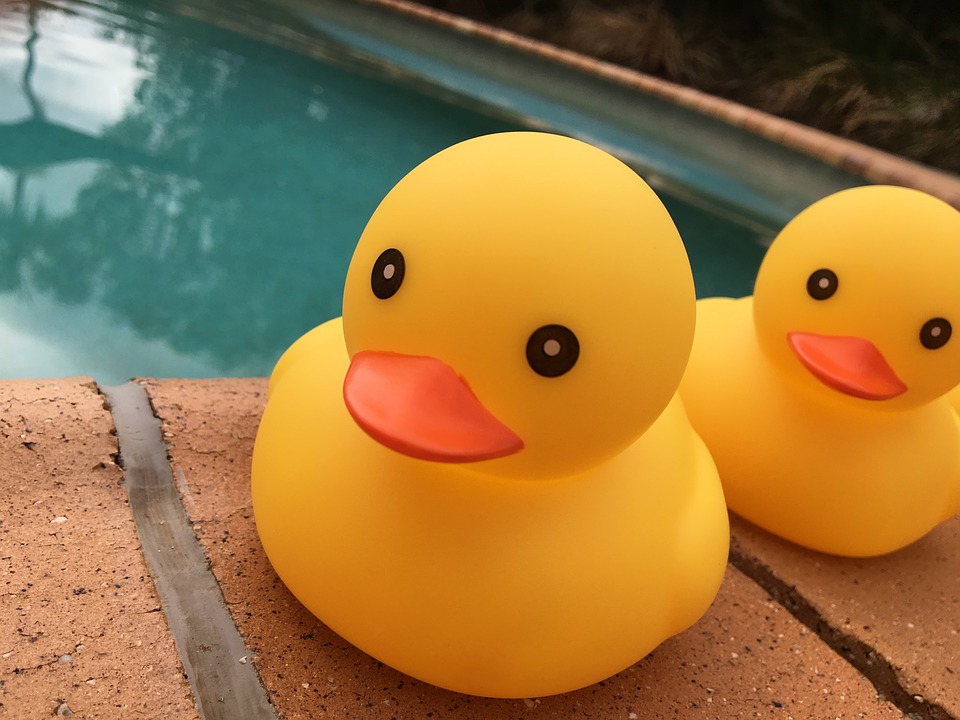Sometimes your schedule won’t allow your kid to have continuous swim instruction without breaks. You have work travel, or they or their sibling plays another sport, or there are family vacations. Swim skills can regress without consistent practice, so how do you help your kid keep up their skills when they aren’t receiving formal lessons?

The answer is: Make it fun! Few kids want to swim laps, but most will happily indulge in lots of swimming activities if it furthers their play. Here are a few ideas to get you started.
- Sinking toys: Sinking toys are GREAT at motivating kids to master controlling their breathing, swimming underwater, and even the building blocks for flip turns and diving! This doesn’t have to be fancy, it can be as simple as a handful of pennies. Let them start in shallow water. They’ll seek more challenging depths as soon as they get bored.
- Noodles! Challenge your kids to stand on their noodle. If that’s too easy, try TWO noodles. If even that is too easy, ask them if they can do a handstand on the noodle. Ask them to jump from the side, over a floating noodle- and move the noodle a little farther for each jump!
Safety note while jumping:
Remind kids that if the distance between themselves and the water is farther than twice the length of their own foot, they need to get closer to the water before jumping in. (For older kids, that should be one times the length of their own foot.)
- Fins: Kids love the ZOOM ZOOM of wearing fins, but I suggest you limit their use to no more than 25% of the time spent in the pool. Just like you limit the number of reps you do with a new, higher weight, the fins increase resistance while swimming, and it’s important to allow recovery time.
- A ball: Any ball that floats will motivate play. Types of play that help extend swim skills include kicking the ball while it and the swimmer are both in the water, traveling with the ball while not touching the pool bottom (even harder: also don’t touch the ball with their hands), catching the ball while jumping into the water, or, if the ball is sturdy, passing the ball from person to person under the water.
- Save the _______: any small floating toys, and a kick board per kid are all you need for this game. Rubber ducks are a favorite. Vary the rules based on ability, and have the kids swim to retrieve the toys. (For advanced swimmers, I put them on the opposite end of the pool, or even tell them they have to put the toy on their forehead while swimming backstroke. For beginners, let them throw the toy from the side and swim out to it with your assistance.)
Whenever possible, I try to structure these games cooperatively. If there is an element of competition, I try to make it all the kids working together to beat me, the adult. Competition can be motivating, but sometimes it also discourages the kids who need the most practice from participating, so I want them to feel that their contribution to the game is constructive, even if they aren’t the fastest or the most skilled.
I wish you all happy hours in the pool!